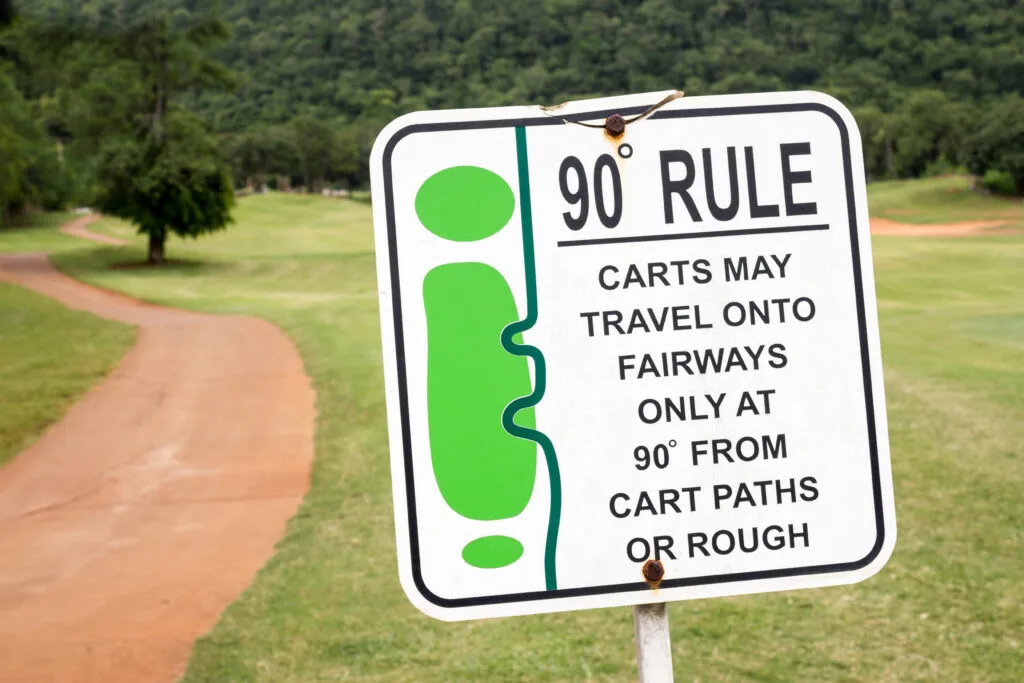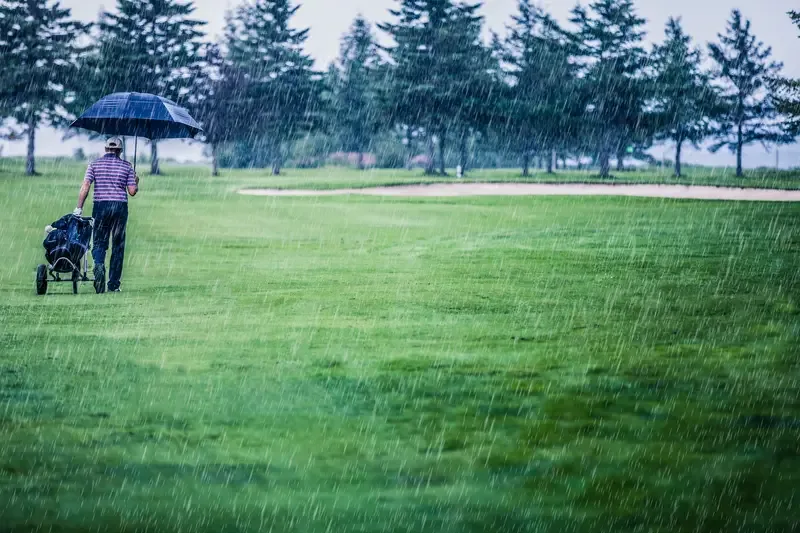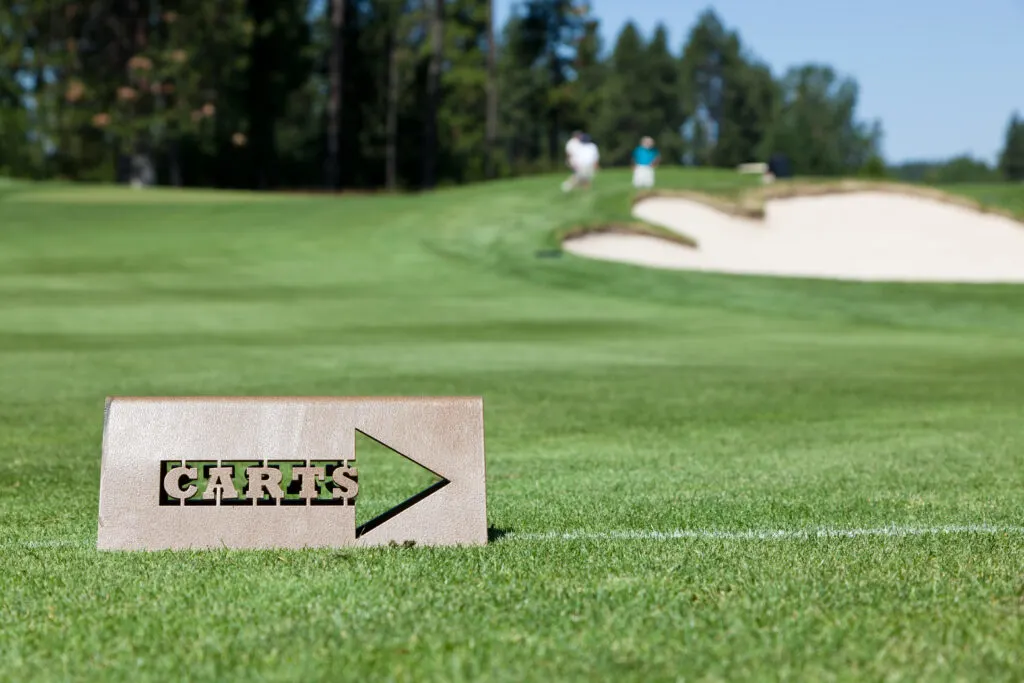The 90-degree rule means that you can use a golf cart on the course but you must take a 90-degree path to get to your ball.
Typically, you will take a lateral path to your golf ball.
How To Adhere To The 90-Degree Rule
Let’s say you tee off and hit your ball 250 yards down the middle of the fairway.
Instead of hopping in your cart and taking the shortest path by driving straight down the middle of the fairway to your ball, here is what you should do:
- Drive along the cart path until you are laterally even with your golf ball.
- Make a 90-degree turn and drive straight to your ball.
- After your shot, turn around and drive straight back to the cart path.
- Continue along the path until you are even with your ball again
- Turn onto the grass and go straight to your ball.
Here is a visual of how to follow the 90-degree rule properly:

Although the 90-degree rule allows carts to be driven on the grass, you should make every effort to use the cart path as much as possible.
For example, say the cart path runs along the left side of the fairway, and your ball is 15 yards to the right of the cart path.
Just drive your cart even with your ball, leave the cart on the path, and walk the 15 yards to your ball.
If the 90-degree rule is in place, the course superintendent has a very good reason for it, and you should make every effort to minimize the number of times you drive the cart on grass.
Related: What Is Cart Path Only?
Why Golf Courses Use The 90 Degree Rule

Wet Conditions
Golf courses use the 90-degree rule to protect the grass.
The 90-degree rule is most commonly used when it has recently rained or is raining.
When the ground is wet, the weight of a golf cart can severely compact the soil and leave ruts in the grass, which can be very difficult to repair.
The 90-degree rule greatly helps to limit wear and tear to the fairway and rough.
Sometimes conditions are so wet that a course will implement a cart path-only rule, which means carts cannot be driven on the grass under any circumstances.
Related: What Are Winter Rules In Golf?
Very Dry Conditions
Many courses in desert-like climates enforce a 90-degree rule year-round.
Due to the differences between southern and northern grasses, many southern courses need to protect the grass year-round.
These courses will typically enforce a slightly different type of 90-degree rule.

Instead of taking a lateral, 90-degree path to your ball and following the same path back to your ball after your shot, many southern courses will instruct you to take a lateral 90-degree path to your first shot and then stay on the fairway until you see a sign on the fairway that tells you to exit.
They do this because the rough is highly susceptible to damage from carts, so they want to minimize the number of times you drive your cart through the rough.
Also, driving on the fairway on certain southern grasses is akin to rolling the turf, and it is actually preferred that you drive on the fairway on these types of courses.
WARNING! Many of these courses will have carts that will alarm and not allow you to drive forward if you enter the rough or other protected areas when you shouldn’t.
In this case, you must reverse until the cart stops alarming.
How Do You Know When The Rule Is Being Enforced?
Usually, there will be a sign on the first tee and possibly at other points as a reminder.
Sometimes a note is left on the golf cart, typically on top of the scorecard.
Related: What Are Winter Rules In Golf?

